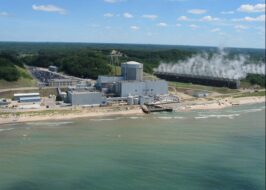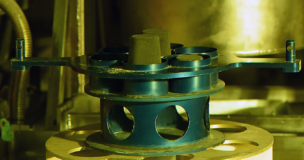The US DoD project to build a portable microreactor for military operations in the field is officially underway.
On Tuesday, the Pentagon announced that it broke ground at a site near the Idaho National Lab to support the build of Project Pele, which aims to produce energy from a Gen IV nuclear reactor for the first time in the US in 2026. And that’s not all—the whole 5MW reactor facility is designed to be transportable within four 20-foot shipping containers, making it simpler for military forces to bring the energy they need wherever they go.
“Project Pele is a key initiative for improving DoD energy resilience and will also play a crucial role in advancing nuclear power technology for civilian applications,” DoD Strategic Capabilities Office (SCO) director Jay Dryer said in a release.
Get up and go: In 2016, a DoD report identified energy mobility and reliability as a key vulnerability for the US military abroad and an important enabling technology to support advanced military ops. Existing energy sources used by the military lacked portability or consistency, and
“The US military, just as a whole, spends an inordinate amount of money, time, people, and logistics effort just to move fuel around,” a16z General Partner David Ulevitch recently put it in a conversation with Ignition. “If you think about how we move fuel around the world to satisfy our forward operating bases and our military endeavors, it’s a massive expense, and it puts lives at risk.”
So what’s an energy source that can be portable, consistent, and resilient to support mobile military operations? In theory, micro-nuclear reactors fit the bill. The SCO saw this, and Project Pele was born.
- The DOE, NRC, National Nuclear Security Administration, and US Army Corps of Engineers are partners on the project.
- On the industry side, BWXT is responsible for manufacturing the reactor itself.
- Northrop Grumman, Rolls Royce Liberty Works, and Torch Technologies are also participating in the project.
What now? Building is officially underway at the site outside the Idaho lab. BWXT is manufacturing the reactor at its facility in Virginia, where it will be assembled in February 2025. In 2026, the fully-assembled reactor will be shipped to Idaho, where it will ideally begin generating electricity.
Lead Reporter of Ignition





